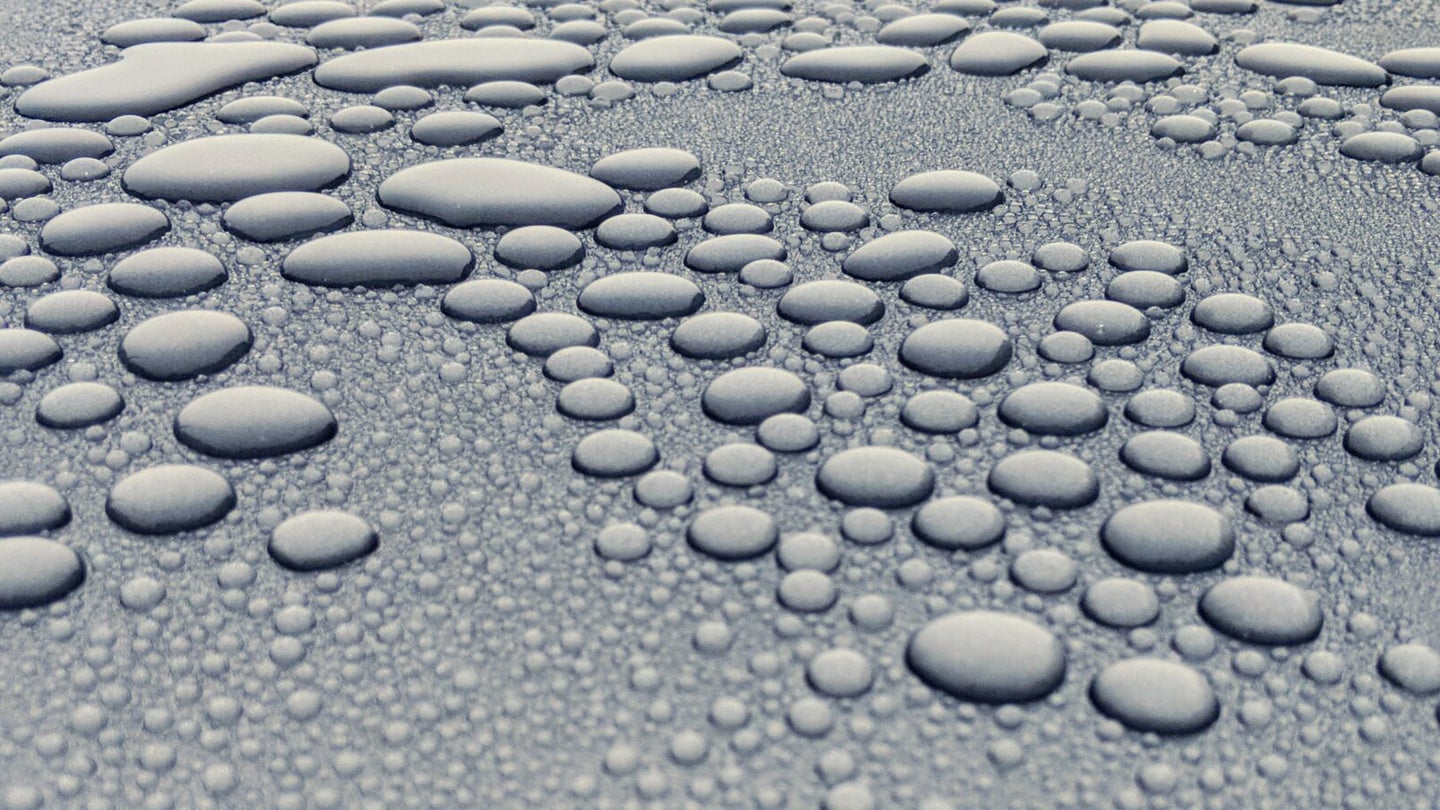How Ceramic Coatings Provide Cutting-Edge Paint Protection
Ceramic is the buzzword in automotive detailing. Here’s a look at the science behind them and why they are better than wax.

We may earn revenue from the products available on this page and participate in affiliate programs. Learn more ›
This article is sponsored by Gtechniq.
A car’s paint exposed to the elements will eventually fade, oxidize, and ultimately peel off. The amount of exposure to sunlight and chemical contaminants will play the biggest part in determining how fast it happens. In the past, natural waxes were the best option to protect your car’s paint. They were eventually replaced by synthetic paint sealants. The current state of the art in paint and clear coat protection is ceramic coatings.
What is your car’s clear coat made of?
In the mid-1970s, car manufacturers began switching from single stage paints to two stage. If your car is more than 40 years old, you probably have single stage paint, which means what you see on the surface is the same down to the primer. If your car is less than 40 years old, it is more than likely painted with a colored base coat, the first stage, which is then covered with the second stage, an acrylic clear coat. It’s that acrylic clear coat that gives it shine and depth.
That clear coat is also the first thing that scratches and oxidizes. Long before we had two-stage paint, car waxes were used, not only to make the finish shinier, but also to protect it from the elements.
What do UV light and environmental contaminants do to clear coats?
Unless you drive exclusively at night, and keep your car indoors during the day, the sun is likely to cause the most damage to your car’s paint. Although UV light only accounts for about 10 percent of the sun’s energy hitting the earth, it will turn your car’s paint or clear coat to a dull, chalky, oxidized mess. Some environmental contaminants that react with, and eat away at your finish are made worse by the added energy of UV light. This explains why the secret to a long-lasting shine is to keep contaminants from touching the clear coat while also shielding it from UV rays. Waxes, sealants, and coatings are a physical barrier between the outside world and your car’s clear coat.
If you are a car person, even in the most remote sense, you’ve heard of carnauba wax. It is one of the oldest forms of car wax, although legend has it animal fat was once used to seal the finish on carriages, and possibly, early cars. Carnauba is a natural product that forms on the leaves of palm trees. It is made into everything from pastes to creams to liquids to make it spreadable. Carnauba wax provides a deep luster, repels water, and normally smells fantastic, but since it sits on the paint instead of bonding to it, its protection only lasts from a few weeks to a few months and then must be reapplied.
Synthetic waxes are man-made replacements for natural waxes like carnauba. They are sometimes referred to as sealants and can be formulated to be tougher, slipperier, and easier to apply than natural waxes, but will still need to be applied several times a year to maintain protection.
What’s the difference between waxes and ceramics?
Ceramics, as a material, are not new—on the order of 20,000 years not new. Craftspeople realized sand and clays containing silicon could be fired or baked to create pottery and tools that would be much harder than the same materials air-dried. The strength comes from silicon and oxygen molecules crosslinking to form a harder material. This same principle is at work in ceramic car coatings.
We looked at a range of products from Gtechniq, a manufacturer of ceramic coating products to see how they are used to protect your car’s finish. A quartz-based ceramic coating is similar to applying a microscopic layer of quartz crystal on top of your car’s clear coat. The hardness will resist scratching, it will add luster and—being hydrophobic—causes water to bead and run off.
The ceramic coating solution contains two main parts: Ceramics, silanes, and siloxanes, and the solvent in which they are suspended. It is applied to the surface of the car in the same way you would apply a liquid wax. As the solvent evaporates, the ceramic polymerizes, creating bonds between ceramic molecules and the car’s finish. This is one of the biggest differences from wax products, which aren’t bonded to the finish. Because of the crosslinking and bonding with the finish, the longest-lasting ceramic coatings are considered permanent, and the reason products like Gtechniq’s Crystal Serum Ultra have to be professionally applied. If you make a mistake in application, it would require sanding it off.
Gtechniq also offers several products—including Crystal Serum Light, EXOv4, and C1 Crystal Lacquer—that give car owners the choice of having them professionally applied or done at home. These are what’s known as a composite coating, which uses a softer layer to bond to the paint and then a harder layer on top for protection.
That permanence is the main selling point of a ceramic coating as well. A product like Crystal Serum Ultra has a nine-year guarantee if applied by an accredited Gtechniq detailer. You will still need to wash your car on a regular basis, but a ceramic coating will make it easier to wash, less susceptible to swirling and it will maintain its shine substantially longer than a wax product. If you really start to miss the ritual of waxing, you can always throw a coat of carnauba or a ceramic maintenance product on top of the coating, if that’s what makes you happy.
